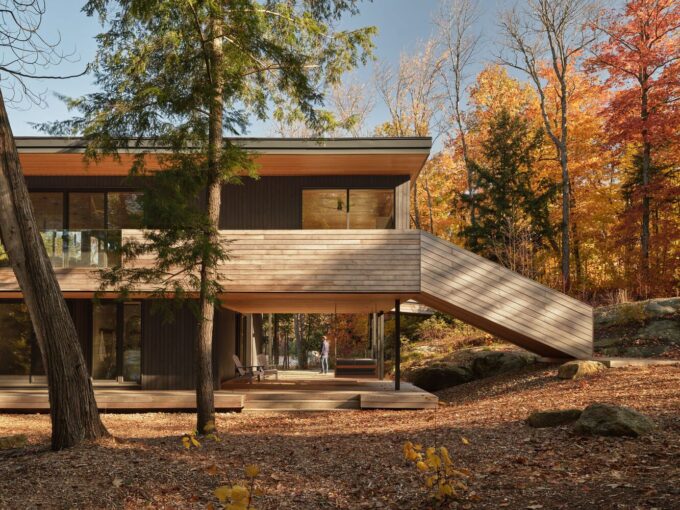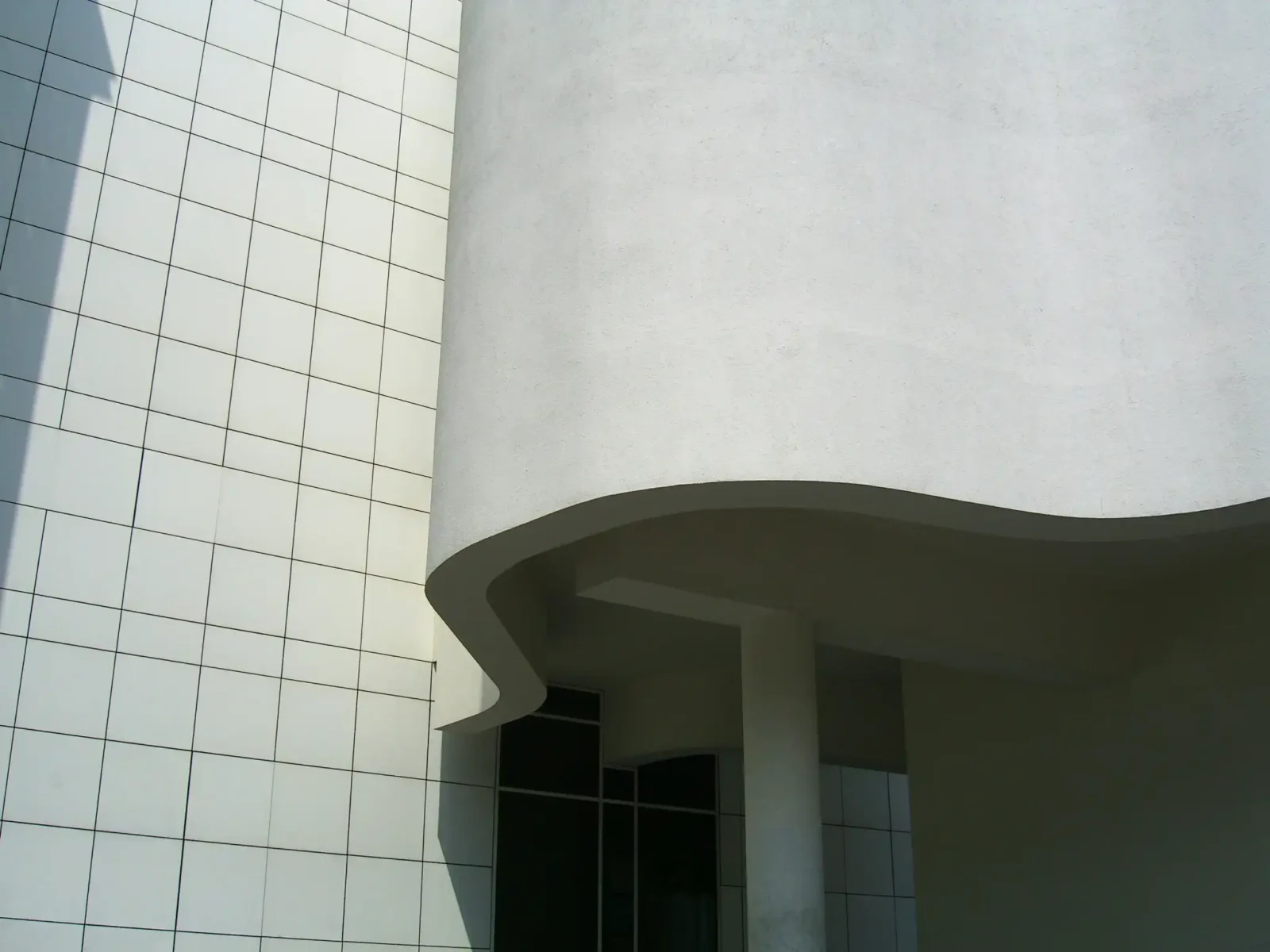- Home
- Articles
- Architectural Portfolio
- Architectral Presentation
- Inspirational Stories
- Architecture News
- Visualization
- BIM Industry
- Facade Design
- Parametric Design
- Career
- Landscape Architecture
- Construction
- Artificial Intelligence
- Sketching
- Design Softwares
- Diagrams
- Writing
- Architectural Tips
- Sustainability
- Courses
- Concept
- Technology
- History & Heritage
- Future of Architecture
- Guides & How-To
- Art & Culture
- Projects
- Interior Design
- Competitions
- Jobs
- Store
- Tools
- More
- Home
- Articles
- Architectural Portfolio
- Architectral Presentation
- Inspirational Stories
- Architecture News
- Visualization
- BIM Industry
- Facade Design
- Parametric Design
- Career
- Landscape Architecture
- Construction
- Artificial Intelligence
- Sketching
- Design Softwares
- Diagrams
- Writing
- Architectural Tips
- Sustainability
- Courses
- Concept
- Technology
- History & Heritage
- Future of Architecture
- Guides & How-To
- Art & Culture
- Projects
- Interior Design
- Competitions
- Jobs
- Store
- Tools
- More
Critical Plumbing Considerations for Architectural Renovations in Phoenix: A Professional Guide

The moment water starts pooling behind freshly installed drywall or a newly renovated bathroom floods during its first week of use, everyone points fingers. The architect blames the contractor. The contractor blames the plumber. The plumber questions the design. Meanwhile, your client watches their dream renovation turn into an expensive nightmare.
In Phoenix’s booming renovation market, where historic homes meet modern design ambitions and commercial spaces undergo constant transformation, the coordination between architects and plumbing professionals can make or break a project. Yet too often, plumbing considerations become an afterthought in the design process, leading to costly changes, delays, and compromised aesthetics.
As experienced contractors like Reliant Plumbing & Rooter can attest, the difference between a smooth renovation and a disaster often comes down to early planning and proper coordination. Whether you’re redesigning a 1950s ranch home in Central Phoenix or modernizing a Scottsdale commercial space, understanding critical plumbing considerations from the start transforms your architectural vision into a buildable reality.
This guide explores the essential plumbing factors that architects must consider during renovations, from navigating Phoenix’s unique challenges to coordinating with local contractors who understand both the technical requirements and the demands of the desert environment.
Table of Contents
ToggleUnderstanding Phoenix’s Unique Plumbing Challenges
Phoenix presents a distinctive set of challenges that architects must consider when designing renovations. The desert climate, combined with the region’s rapid growth and aging infrastructure, creates conditions unlike anywhere else in the country.

Water pressure fluctuations plague many Phoenix neighborhoods, particularly in older areas where original infrastructure struggles to meet modern demands. During summer months when water usage peaks, pressure can drop significantly, affecting everything from shower performance to appliance functionality. Architects must account for these variations when specifying fixtures and designing layouts to ensure optimal functionality.
The extreme temperature swings between scorching summers and cool winters cause unique stress on plumbing systems. Pipes expand and contract dramatically, leading to joint failures and leaks that might not occur in more temperate climates. This thermal cycling affects material selection, installation methods, and access requirements for future maintenance and repair.
Phoenix’s notoriously hard water, with a mineral content ranging from 169 to 287 parts per million (well above the 120 ppm threshold for “hard” water), accelerates pipe corrosion and fixture degradation. What might last 20 years in other cities may need replacement in 8-10 years here. Smart renovation design must facilitate future access for inevitable replacements without requiring major demolition, potentially saving homeowners $5,000 to $15,000 in future repair costs.
Soil conditions add another layer of complexity. The presence of caliche, a cement-like layer of hardened calcium carbonate found throughout the Valley, can make underground plumbing modifications extremely challenging and expensive. Breaking through caliche can increase excavation costs by 200-300%, turning a $2,000 drain line relocation into an expense of $6,000-$8,000. Architects who don’t account for these conditions during the design phase often face budget-breaking surprises during construction.
Pre-Design Assessment: What Architects Need to Know
Before putting pencil to paper or cursor to CAD, architects must understand the existing plumbing infrastructure they’re working with. This assessment phase, often overlooked in the excitement of design development, prevents costly surprises and informs realistic design decisions.
Start by requesting a comprehensive plumbing inspection from a qualified professional. This isn’t just about identifying obvious problems. It’s about understanding the system’s capacity, condition, and potential for integration with your renovation plans. Key elements to assess include pipe materials (copper, galvanized steel, or newer PEX), pipe sizing and layout, water heater location and capacity, and accessibility of the shut-off valve.
Material identification proves particularly crucial in Phoenix renovations. Homes built before 1970 often contain galvanized steel pipes that are well past their useful life. These pipes not only restrict water flow due to internal corrosion but can also contaminate water with rust and minerals. Polybutylene pipes, common in homes built between 1978 and 1995, are prone to sudden failure and often require complete replacement during renovations.
Documentation gathering should include original building plans, if available, as well as previous renovation permits and inspections, water quality test results, and utility bills that show usage patterns. This historical data provides invaluable context for design decisions and helps identify potential issues before they become problems.
Capacity evaluation extends beyond just counting fixtures. Consider future needs: Will that master suite addition overtax the existing water heater? Can the current supply lines support the high-flow shower system your client desires? Understanding these limitations early allows for realistic design development and accurate budgeting.

Design Phase Integration: Avoiding Common Pitfalls
The design phase is where architectural vision meets plumbing reality. Success requires thinking beyond aesthetics to consider constructability, code compliance, and long-term functionality. Common pitfalls often stem from late plumbing integration or insufficient coordination with plumbing professionals.
Fixture placement might seem straightforward, but Phoenix’s slab-on-grade construction makes relocating plumbing extremely expensive. Moving a toilet, even a few feet, can require extensive concrete cutting and repair. Architects who design without considering existing drain locations often face difficult conversations with clients about budget overruns or design compromises.
Venting requirements frequently surprise designers unfamiliar with plumbing codes. Every fixture needs proper venting to prevent sewer gases from entering the space and ensure adequate drainage. In renovation projects, finding routes for new vent stacks through existing structures while maintaining architectural integrity requires creative solutions and early planning.
Water heater placement deserves special attention in Phoenix renovations. Modern efficiency standards often require larger units than what existing spaces accommodate. Tankless systems offer space-saving solutions but require upgraded gas lines or electrical service. Consider accessibility for maintenance, proximity to fixtures to minimize heat loss, and ventilation requirements for gas units.
The indoor-outdoor living that defines Phoenix architecture creates unique plumbing challenges. Outdoor kitchens, poolside bathrooms, and elaborate water features all require freeze protection despite the desert climate. A single night below freezing can cause thousands of dollars in damage to exposed plumbing. Design these systems with isolation valves and drainage capabilities to ensure optimal functionality.
Material Selection for Desert Conditions
Material selection in Phoenix requires balancing performance, longevity, and code compliance with the harsh desert environment. The extreme heat, mineral-rich water, and temperature fluctuations eliminate many options that work well in other climates.
Copper remains popular for its durability and heat resistance, but Phoenix’s aggressive water chemistry can cause premature pinhole leaks. Type L copper, thicker than the standard Type M, offers better longevity but comes at a higher cost. When specifying copper, factor in the need for accessible joints and potential future replacement of sections.
PEX (cross-linked polyethylene) has revolutionized renovation plumbing with its flexibility and resistance to Phoenix’s water chemistry. Its ability to expand without bursting provides freeze protection, while fewer joints mean fewer potential leak points. However, PEX requires protection from UV exposure and can’t be used for outdoor applications without proper insulation and coverage.
CPVC offers chemical resistance and ease of installation, but becomes brittle with age, particularly when exposed to Phoenix’s extreme attic temperatures. While code-approved and budget-friendly, architects should consider accessibility for future repairs when specifying CPVC in difficult-to-reach locations.
For drain lines, ABS plastic handles Phoenix conditions well, though some municipalities require cast iron for underground applications. The black color of ABS absorbs heat, making proper support crucial to prevent sagging in attic installations. Schedule 40 PVC, while common in other regions, can become brittle in extreme heat and isn’t recommended for hot water applications.
Coordinating with Existing Systems
Successful renovations seamlessly integrate new plumbing with existing systems. This coordination requires understanding not just what is there, but also how it all works together and where potential conflicts might arise.
Pressure balancing becomes critical when adding fixtures to existing systems. That luxurious rain shower head might reduce the kitchen faucet to a trickle if the supply lines can’t handle the combined flow. Professional plumbers can calculate a system’s capacity and recommend upgrades before problems arise.
Mixing old and new materials requires special attention to galvanic corrosion. When dissimilar metals contact in the presence of Phoenix’s mineral-rich water, accelerated corrosion occurs. Dielectric unions or brass fittings prevent this issue, but must be properly specified and installed.

System accessibility often determines renovation success. Phoenix’s slab foundations make under-floor repairs expensive and disruptive. Design new plumbing routes through accessible spaces, such as attics, closets, or furred walls. Include access panels for shut-off valves, especially in multi-story renovations where leaks can cause extensive damage.
Hot water recirculation systems have become increasingly popular in Phoenix renovations, eliminating the wait (and water waste) for hot water at distant fixtures. Retrofitting these systems requires careful planning to route return lines and integrate controls with existing water heaters. The energy savings and convenience often justify the additional complexity.
Code Compliance and Permitting in Phoenix
Navigating Phoenix’s building codes and permit requirements can be challenging even for experienced architects. The city updates its codes regularly, and what was acceptable five years ago may no longer meet current standards. Understanding these requirements during the design phase prevents costly revisions during the permitting process.
Phoenix adheres to the International Plumbing Code, with local amendments that address regional concerns. Key areas often triggering plan review comments include fixture counts for occupancy loads, accessible design requirements, water conservation measures, and backflow prevention for irrigation systems.
Permit requirements vary by project scope. Simple fixture replacements might not require permits, while moving plumbing or adding fixtures always does. The city requires licensed plumbers for most permitted work, making early contractor involvement beneficial. Design professionals should factor permit review time into project schedules, typically 10-15 business days for residential and longer for commercial projects.
Water conservation regulations increasingly impact renovation design. Phoenix requires low-flow fixtures in all renovations, with specific performance standards that eliminate many decorative options. Greywater systems, while encouraged, must meet strict design standards and require separate permits. Understanding these requirements early prevents specification of non-compliant fixtures.
Planning for Future Maintenance
Thoughtful renovation design anticipates future maintenance needs. In Phoenix’s harsh environment, even quality plumbing systems require regular service. Designs that facilitate maintenance reduce long-term costs and extend system life.
Access panel placement requires a balance between aesthetics and functionality. Strategic locations include behind toilets for shut-off valves, in closet walls adjacent to bathrooms, attic areas above water heaters, and discrete ceiling locations for upper-floor plumbing. Modern access panels with paintable surfaces minimize visual impact while providing necessary accessibility.
Shut-off valve placement goes beyond code minimums in well-designed renovations. Include valves for individual fixtures, floor-by-floor isolation, outdoor plumbing zones, and water feature systems. Clear labeling and accessible locations prevent water damage during emergencies and simplify routine maintenance.
Consider maintenance pathways during design. That stunning tile work looks beautiful, but will it need complete demolition to repair a leak? Modular approaches, including access panels, removable base cabinets, and strategic tile layouts, enable repairs without compromising finishes. Document as-built plumbing locations to prevent future guesswork and ensure accurate planning.
Sustainable Solutions for Desert Living
Sustainability in Phoenix has evolved from a trend to a necessity. With water scarcity and extreme energy demands, renovations must incorporate conservation strategies that benefit both the environment and operating costs.
Greywater systems offer significant water savings by reusing drainage from sinks, showers, and washing machines for landscape irrigation. A typical residential system can save 15,000-40,000 gallons annually, translating to $150-$400 in yearly water bill savings. Design considerations include separation from blackwater systems, appropriate filtration, distribution to drought-tolerant landscaping, and fail-safe overflow to sewer connections. While installation costs range from $2,000 to $5,000, water savings often provide a 5-7 year payback period in Phoenix’s high water rate environment.
Rainwater harvesting might seem counterintuitive in the desert, but Phoenix’s monsoon season can provide substantial water for landscape use. Integration requires modifications to roof drainage, the installation of first-flush diverters, the placement of a storage tank, and the installation of pumping systems. The architectural integration of storage tanks as design features, rather than hidden utilities, creates educational opportunities.
High-efficiency fixtures have evolved beyond basic function to offer superior performance. Modern low-flow shower heads provide satisfying pressure through air injection technology. Dual-flush toilets allow users to select appropriate water usage. Smart irrigation controllers automatically adjust to changing weather conditions. Specifying these fixtures requires understanding both performance metrics and client expectations.
Hot water recirculation systems equipped with a timer or demand controls minimize water waste by eliminating the need to wait for hot water. In large Phoenix homes, where fixtures may be 50 feet from water heaters, these systems save thousands of gallons of water annually. Design considerations include return line routing, pump placement, control integration, and insulation requirements.
The Value of Early Contractor Involvement
Bringing experienced plumbing contractors into the design process early pays dividends throughout the project. Their practical knowledge helps identify potential issues before they become expensive change orders.

Constructability reviews during design development identify problems such as impossible pipe routes, code conflicts, inadequate space for equipment, and unrealistic installation sequences. A plumber’s input on seemingly minor details, such as fitting clearances or valve handle orientation, prevents field modifications that compromise the design intent.
Budget accuracy improves dramatically with contractor input. Experienced plumbers can identify when moving a fixture 6 inches might save thousands in concrete cutting or when a different pipe route eliminates the need for expensive structural modifications. This value engineering maintains design quality while managing costs.
Local knowledge proves invaluable in Phoenix. Contractors familiar with area inspectors understand the varying interpretation preferences that exist between jurisdictions. They know which innovative solutions gain approval and which trigger lengthy review processes. This experience streamlines permitting and prevents construction delays.
Coordination between trades works best when there is early involvement. Plumbers can identify conflicts with HVAC, electrical, and structural systems before installation begins. Modern renovation projects require increasing integration between systems, making this coordination crucial for success.
Conclusion: Building Success Through Integration
Successful architectural renovations in Phoenix require more than beautiful designs. They demand thoughtful integration of plumbing systems that respect both the harsh desert environment and the practical needs of modern living. By considering plumbing requirements from the earliest design stages, architects can create renovations that function as beautifully as they look.
The key lies in changing perspective from viewing plumbing as a necessary evil to embracing it as an integral design element. When architects understand the unique challenges of Phoenix’s climate, existing infrastructure, and regulatory requirements, they can create solutions that enhance rather than compromise their vision.
Early collaboration with experienced local contractors, thorough assessment of existing conditions, and thoughtful material selection lay the groundwork for a successful renovation. By paying careful attention to code compliance, future maintenance needs, and sustainability, you create projects that serve clients well for decades to come.
The next time you begin a Phoenix renovation project, remember that those hidden pipes and fixtures determine whether your design succeeds or fails. Give them the attention they deserve from the start, and you’ll avoid the finger-pointing that comes with plumbing failures. Your clients, your reputation, and your portfolio will thank you.
Submit your architectural projects
Follow these steps for submission your project. Submission FormLatest Posts
The Ultimate Guide to Fencing in North Dakota: Choosing the Best Fence for Your Property
Watching a chain link fence twist in 70 mph winds near Minot...
Gaudí: Where Architecture Meets Science
Gaudí: Where Architecture Meets Science shows catenary arches, ruled surfaces, and biomimicry...
How Housing Market Forces Shape Architectural Design Today
Architecture never exists in isolation. Buildings rise from a mix of ambition,...
Why Portable Formaldehyde Gas Detectors Matter on Construction Sites
As construction practices shift toward more enclosed and material-intensive environments, the risk...












Leave a comment